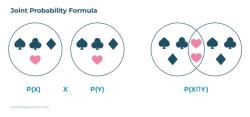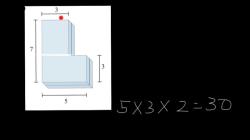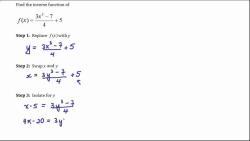How do you calculate a fraction into a percentage?
To convert a fraction into a percentage, you can follow these steps:
Step 1: First, convert the fraction into a decimal by dividing the numerator (top number) by the denominator (bottom number).
Step 2: Multiply the decimal by 100 to express it as a percentage.
Here's the formula:
Percentage = (Fraction as Decimal) × 100
Let's work through an example:
Example: Convert the fraction 3/4 into a percentage.
Step 1: Convert the fraction into a decimal:3/4 = 0.75 (by dividing 3 by 4)
Step 2: Multiply the decimal by 100 to express it as a percentage:0.75 × 100 = 75%
So, 3/4 as a percentage is 75%.
In summary, to convert a fraction into a percentage, divide the numerator by the denominator to get the decimal equivalent, and then multiply that decimal by 100 to express it as a percentage.
Fraction to Percentage Conversion: A Simple Calculation Guide
To convert a fraction to a percentage, you can use the following steps:
- Divide the numerator (top number) by the denominator (bottom number) of the fraction.
- Multiply the result by 100.
- Add a percent sign (%) to the end of the result.
Here is an example:
Fraction: 1/2
1 / 2 = 0.5
0.5 * 100 = 50
50%
Therefore, the fraction 1/2 is equal to 50%.
Steps to Accurate Conversion
To ensure accurate conversion, it is important to follow the steps above carefully. Here are a few additional tips:
- If the fraction is not in simplest form, simplify it before converting it to a percentage.
- If the result of dividing the numerator by the denominator is a decimal with more than two decimal places, round it to two decimal places before multiplying by 100.
- Be careful not to round your answer too early. If you need to round your answer, do so at the end of your calculation.
Mastering the Conversion Process
With a little practice, you will be able to convert fractions to percentages quickly and accurately. Here are a few things you can do to improve your skills:
- Solve practice problems. There are many online resources that offer practice problems for fraction to percentage conversion.
- Use a calculator. A calculator can help you to check your answers and ensure accuracy.
- Teach someone else. If you can teach someone else how to convert fractions to percentages, you will have a better understanding of the process yourself.
Conclusion
Converting fractions to percentages is a simple skill that can be useful in a variety of situations. By following the steps above and practicing regularly, you can master the conversion process and quickly and accurately convert any fraction to a percentage.











